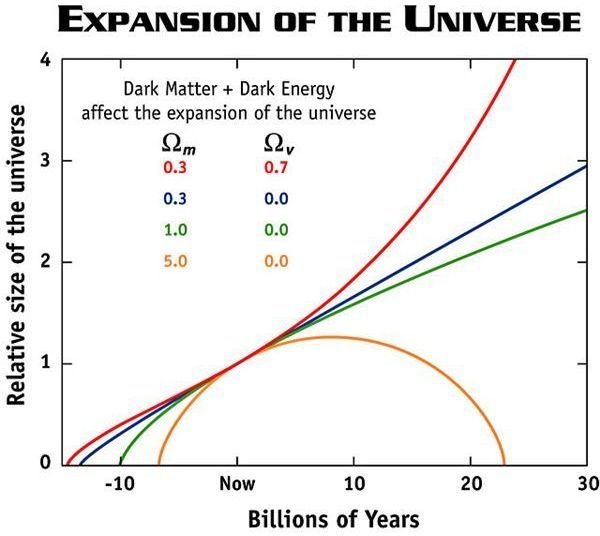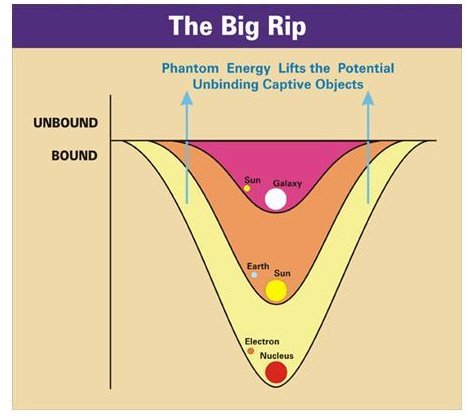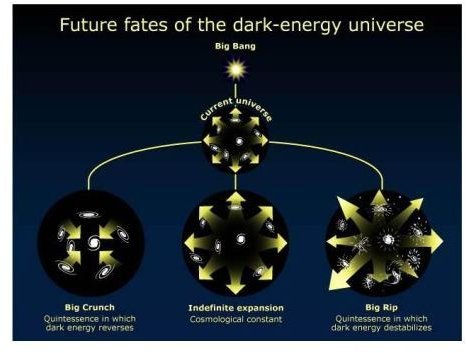End of Universe: How Will the Universe End? Heat Death
In 1922 the Russian mathematician Alexander Friedman used Einstein’s theory of general relativity to discover that the universe was not static. We know now that the universe started in an enormous explosion from a single point that we imaginatively named the Big Bang. Since then the universe has evolved, forming stars and galaxies leaving us with what we see today. However, the universe as we know it cannot sustain itself indefinitely. There is only so much hydrogen to turn into stars, and other properties like dark energy and entropy ensure that the universe is careening towards a definite end.
Heat Death
Not including things like dark matter or dark energy, the universe is made up of a huge collection of atoms. In the 1850s a German physicist named Rudolf Clausius was doing work on isolated systems in thermodynamic equilibrium, and came up with a concept he called entropy. He said that any collection of atoms or molecules when completely isolated tended to become more and more disordered. As an example, a nice and orderly brick wall will tend to fall apart and become less organized over time. Entropy is a measure of this disorderliness, and will increase with time. Another way to look at the concept of entropy is with heat. When Clausius was studying thermodynamics, he explained entropy using the Second Law of Thermodynamics: Heat cannot flow spontaneously from a material at a lower temperature to a material at a higher temperature.
At some point in the future, the universe will reach a point of maximum entropy. This is what cosmologists call heat death. As all the

atoms in the universe bump into each other, transferring heat from hot regions to cold regions, the universe will asymptotically reach a state where all energy is evenly distributed. There will be no more stars, no more black holes, no more anything other than a soup of elementary particles with a temperature very close to absolute zero.
Luckily for us, if heat death is where the end of universe is headed, it will take a long time getting there. The main reasons for this are that the universe is huge and it tends to clump up. Some stars can live for billions of years before they finally die, and many stars will just reform again once they explode. Over a long enough time period star formation will stop and the only things left will be black holes. Hawking radiation is a form of radiation that black holes emit; a super-massive black hole with 1011 solar masses will take 10100 years to fully dissipate.
Big Rip

One of the biggest discoveries of modern astronomy is the presence of dark energy. This is a type of energy that exists all through outerspace, which is counteracting the force of gravity and causing the universe to expand. Some astronomers think of it as a sort of base line amount of energy that exists in the vacuum of space. So as things get further away from each other and the vacuum between them gets bigger, the speed that they move away from each other gets faster. This is why we see galaxies twice as far away from us receding at twice the speed. An interesting feature of the expansion of the universe is that it can expand faster than the speed of light.
The Big Rip would be the fate of the universe if dark energy was strong enough to fully counteract the force of gravity. In billions of years every galaxy will be “moving” away from us faster than the speed of light, meaning that no particle from another galaxy will be able to interact with our own galaxy. For all intents and purposes, the extent of the observable universe will be only our own Milky Way. As time goes on, even the gravity of the Milky Way will not be strong enough to hold it together, and its stars will start receding from each other. A mere 60 million years before the final big rip, you will be able to look up into the sky and not see a single star other than the Sun.
Three months before the end of universe, the solar system will be flung apart as dark energy overcomes the gravity of the Sun. In the last minutes the Earth itself will start to disintegrate, and an instant before the end all subatomic particles will be ripped apart. And there you have it; what you’re left with is fundamental particles receding away from each other so quickly that they cannot interact with each other.
Big Crunch
The big crunch is the opposite of the big rip. Supposing that the dark energy in the universe is not strong enough to overcome the force of gravity, on a long enough time scale all matter will be drawn back together into another singularity. The Hubble Constant is the rate at which the universe is expanding due to dark energy, and our current best guess is that for every megaparsec of space between two objects, they are receding from each other at a speed of 70.8 kilometers per second. The main factor that determines whether the universe will end in a big crunch is its density. If all the regular matter and dark matter in the universe is close enough together that dark energy cannot produce an escape velocity, the expansion of the universe will slow down and eventually reverse. All matter will come crashing back together, producing an enormous black hole.
There is some speculation that this final singularity could go on to produce another big bang, and that the universe goes through a cyclic phase of expansion and retraction. This theory is called the big bounce, and appeals to many people because of its symmetry. However, the big bounce is based on some unproven assumptions about the nature of the universe and spacetime, and more research is needed before it can be proven or disproven. The big crunch theory itself has had some doubts cast on it based on the fact that our measurements tell us that rather than slowing down, the universe is actually accelerating in its expansion. The only thing keeping the big crunch theory alive is our complete absence of knowledge of what dark energy is or how it works.
Sources
How fast is the universe expanding?
Life, the Universe & Nothing
What is the ultimate fate of the universe?
Expansion graph: https://map.gsfc.nasa.gov/media/990350/990350b.jpg
Future fates: https://www.xscience.info/images/stories/News/Physics-Astronomy/Dark-Energy-Matter-NASA.jpg
Big Rip Energies: https://www.aip.org/png/images/bigrip.jpg
